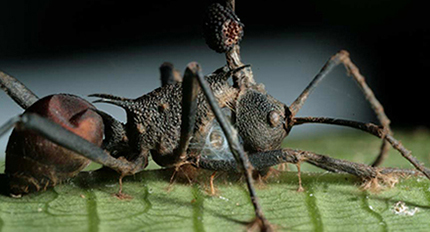A University of Louisiana at Lafayette student has discovered a “zombie fungus” that’s been off scientists’ radar for almost a century, Newsweek reports this week.
Stephen Saltamachia, a senior majoring in microbiology at UL Lafayette, discovered the rare, furry fungus while working at Acadiana Park Nature Station in Lafayette. He spotted a carpenter ant queen wandering outside, which caught his attention since a queen rarely leaves her nest.
“A born naturalist, Saltamachia suspected that the ant might be parasitized by a brain-manipulating pathogen often called 'zombie fungus,' which causes infected insects to behave abnormally,” an article posted on Newsweek’s website late Monday states.
Saltmachia studied the errant ant after sterilizing it and placing it in a petri dish.
“The dead insect gave rise to a vigorous, furry fungus that sprouted from its dead body like moldering cotton candy,” Douglas Main writes in the article.
The magazine cites David Hughes, a researcher at Pennsylvania State University who specializes in zombie ant fungi. He said the fungi had been “ ‘missed by mycologists and entomologists’ ” for almost 100 years. The last time it was mentioned as a major citation in studies was in the 1920s, according to Newsweek.
Why is it called a “zombie fungus”?
“Fungi in this group infects ants and other insects and often control their behavior to maximize their potential to spread—before ultimately killing the animal. For example, one such fungus infects ants and forces them to climb high up vegetation before perishing and giving rise to horn-like fungal growths, thus allowing the species’s spores to spread farther than they would if released closer to the ground,” Main explains.
Photo: A zombie fungus grows on a carpenter ant’s corpse. (Courtesy of David Hughes, Pennsylvania State University)
